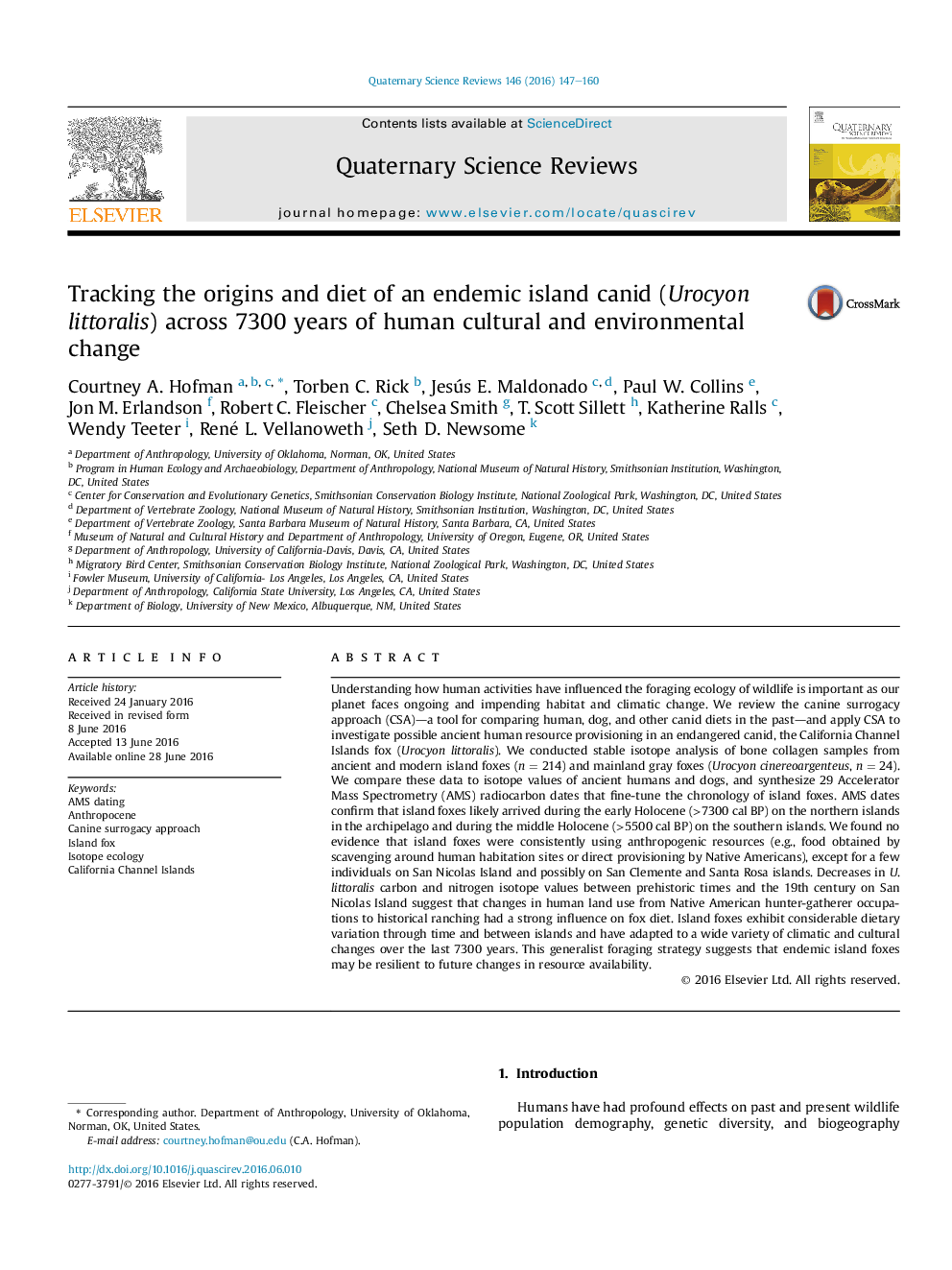| کد مقاله | کد نشریه | سال انتشار | مقاله انگلیسی | نسخه تمام متن |
|---|---|---|---|---|
| 4735270 | 1640789 | 2016 | 14 صفحه PDF | دانلود رایگان |

• Canine surrogacy approach is applied to a wild canid, the Channel Island Fox.
• AMS 14C dates of 29 fox bones indicate arrival on the islands ∼7300 years ago.
• Isotopes suggest limited anthropogenic resource use by foxes except in Late Holocene.
• Island foxes have adapted their diet, despite environmental and cultural change.
Understanding how human activities have influenced the foraging ecology of wildlife is important as our planet faces ongoing and impending habitat and climatic change. We review the canine surrogacy approach (CSA)—a tool for comparing human, dog, and other canid diets in the past—and apply CSA to investigate possible ancient human resource provisioning in an endangered canid, the California Channel Islands fox (Urocyon littoralis). We conducted stable isotope analysis of bone collagen samples from ancient and modern island foxes (n = 214) and mainland gray foxes (Urocyon cinereoargenteus, n = 24). We compare these data to isotope values of ancient humans and dogs, and synthesize 29 Accelerator Mass Spectrometry (AMS) radiocarbon dates that fine-tune the chronology of island foxes. AMS dates confirm that island foxes likely arrived during the early Holocene (>7300 cal BP) on the northern islands in the archipelago and during the middle Holocene (>5500 cal BP) on the southern islands. We found no evidence that island foxes were consistently using anthropogenic resources (e.g., food obtained by scavenging around human habitation sites or direct provisioning by Native Americans), except for a few individuals on San Nicolas Island and possibly on San Clemente and Santa Rosa islands. Decreases in U. littoralis carbon and nitrogen isotope values between prehistoric times and the 19th century on San Nicolas Island suggest that changes in human land use from Native American hunter-gatherer occupations to historical ranching had a strong influence on fox diet. Island foxes exhibit considerable dietary variation through time and between islands and have adapted to a wide variety of climatic and cultural changes over the last 7300 years. This generalist foraging strategy suggests that endemic island foxes may be resilient to future changes in resource availability.
Journal: Quaternary Science Reviews - Volume 146, 15 August 2016, Pages 147–160